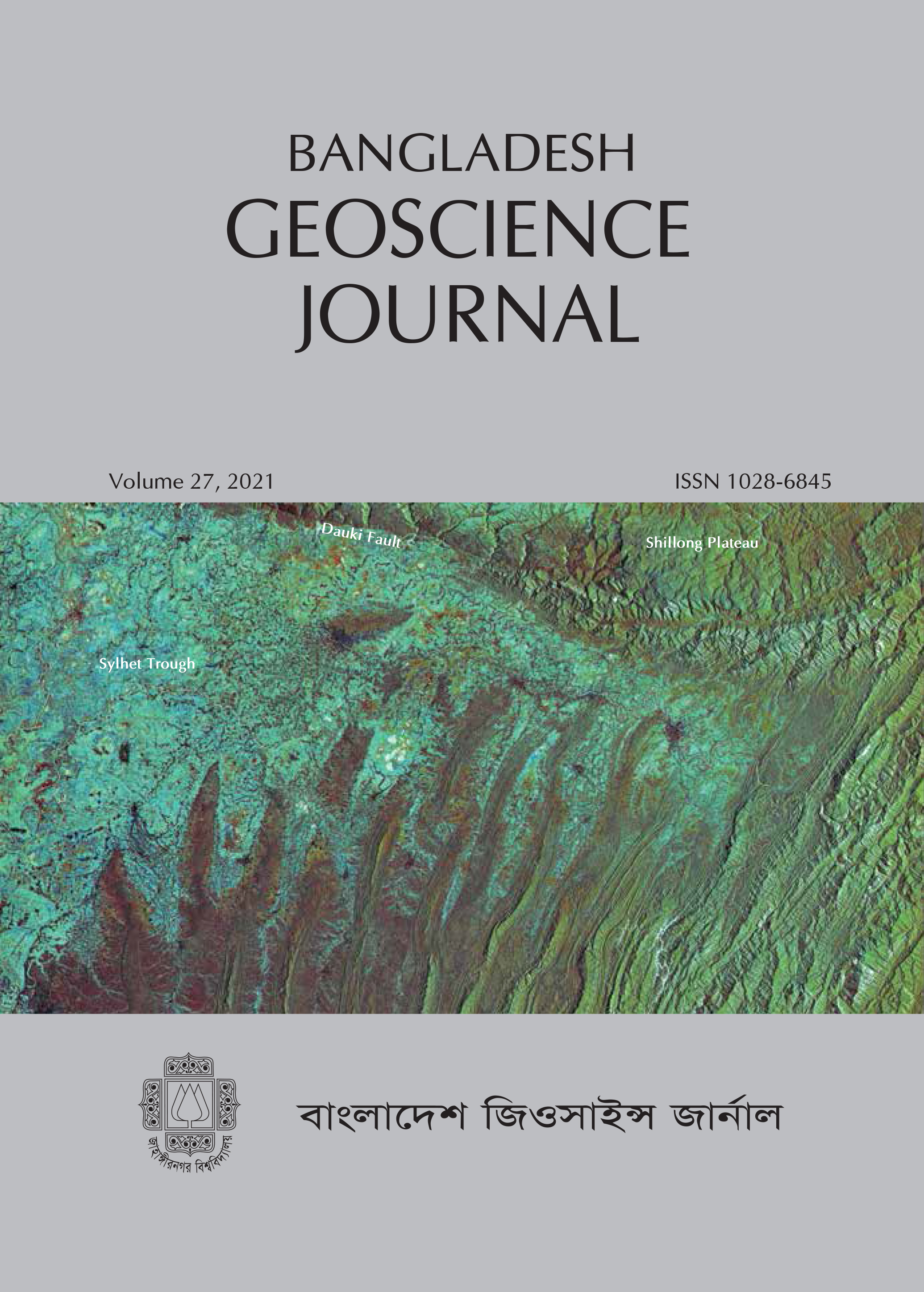Textural and heavy mineral characteristics of the bar sediments from the upper reaches of the Atrai River, northwest Bangladesh
Main Article Content
Abstract
The Atrai River originates in the southeast of the Himalaya and is considered one of the major tributaries of the mighty Brahmaputra River in the Bengal Basin. This paper presents the textural and heavy mineral distribution of the bar deposits from the upper reaches of the Atrai River. The textural characteristics suggest that the Atrai River sediments are mediumto fine grained (avg.1.47φ), moderately well sorted (avg.0.58φ), positively skewed (~78%) and mesokurtic to leptokurtic in nature. Various bivariate diagrams indicate the investigated sediments were deposited in the channel floor under a medium level of energy. The results also suggest that the sediments are mostly bedload sediments and were deposited by rolling and suspension mechanisms. The heavy mineral analysis reflects the predominance of metastable heavy minerals (garnet, epidote, staurolite, kyanite, and sillimanite) than the ultra-stable heavy minerals (zircon, rutile, and tourmaline). A low- to high-grade metamorphic source terrain is suggested by the heavy mineral suite of garnet, epidote, kyanite, staurolite, and sillimanite. An acid igneous source complex is reflected by the occurrence of zircon, rutile, tourmaline, apatite, and hornblende. A basic igneous rock provenance is indicated by the presence of pyroxene and opaque minerals. Occurrences of rounded to sub-rounded zircon and rutile indicate sedimentary and meta-sedimentary provenance. Thus, it appears that the Atrai River sediments were derived from mixed sources, likely from the eastern part of the Higher Himalaya, the Lesser Himalaya and the southeasterly Sub-Himalayan Ranges.

